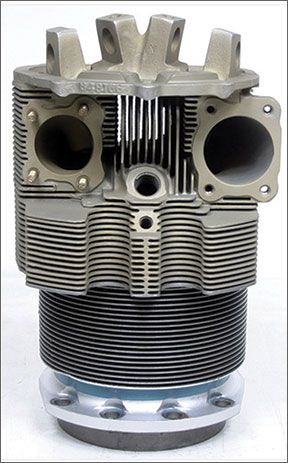If you’ve been watching closely over the past few years, you may have noticed several Airworthiness Directives (ADs) from the FAA concerning replacement cylinders for popular GA piston engines. Depending on the engine, the cylinder’s manufacturer and when it was installed, an applicable AD may require removal and replacement within 25 operating hours. At a minimum, it will mandate frequent inspections.
Most recently, the FAA proposed yet another AD, this one potentially targeting more than 60,000 Engine Components International (ECI) cylinders for replacement, affecting some 6000 aircraft and costing owners and operators more than $82 million. The AD targets cylinder head cracks and cylinder head-to-barrel separations and results, at least in part, from an NTSB recommendation to the FAA made earlier this year.
Reaction has been mixed, to say the least. “This proposed AD would result in an enormous financial burden for the industry, and could have the unintentional result of compromising safety,” Robert Hackman, AOPA vice president of regulatory affairs, said. “Requiring the replacement of many cylinders, in addition to repetitive inspections, goes well beyond the recommendations of a National Transportation Safety Board Safety Recommendation issued in February 2012.” Similar reactions from EAA and other groups greeted the proposed AD.
Putting aside the relative merits of the proposed AD, but considering all the other ADs out there (Full disclosure: My airplane is covered by an existing AD targeting cylinders from Superior Air Parts), it’s clear there’s something wrong with the ways in which cylinders are designed, manufactured, regulated and operated. Until the FAA and manufacturers get their collective acts together, we’ll continue to have problems, no matter who manufactured them.
But I’m convinced a lot of the cylinder problems the industry has seen over the last decade or so stem from operator error—specifically, a tendency to run them too hot. The different materials used expand and contract at different rates, and the alloys have a finite limit to the number of times they can exceed certain temperatures. People whose opinions on such matters I respect use 380 degrees F as a redline, while many engine and airframe manufacturers say 460 degrees. Cooler always is better, and we wouldn’t be surprised to learn many failed cylinders have frequently gotten too hot.
The best way for operators to prevent cylinder failures is to install and use a multi-probe engine monitor, and react promptly when it shows high cylinder temperatures. This also helps prevent costly ADs.
— Jeb Burnside




